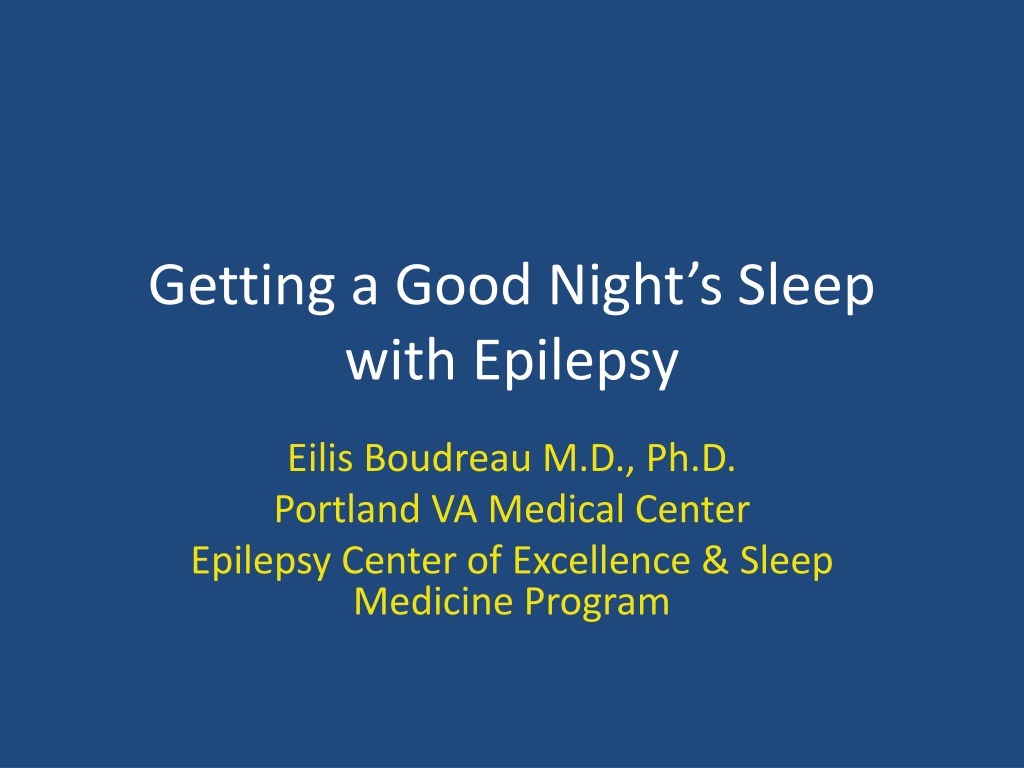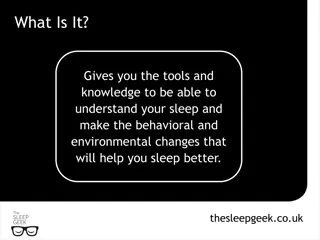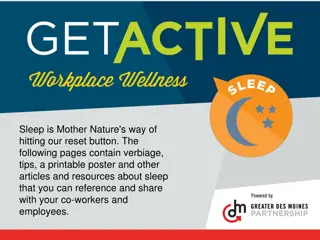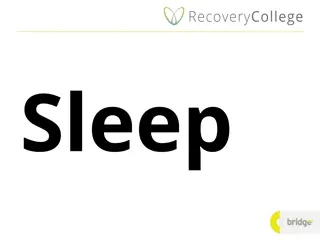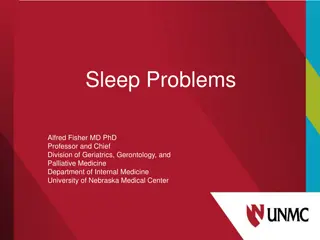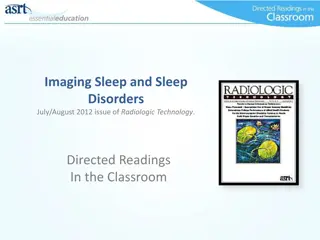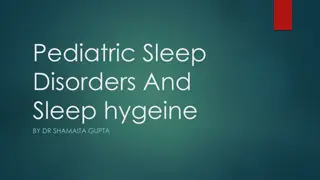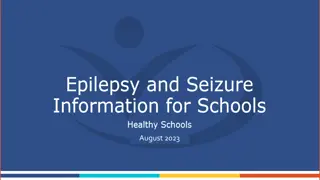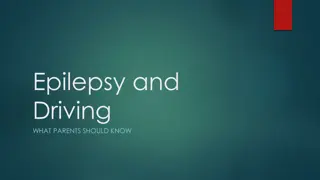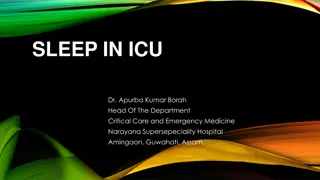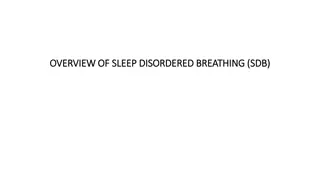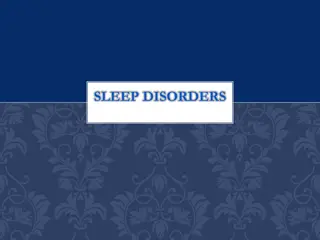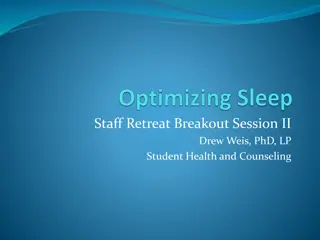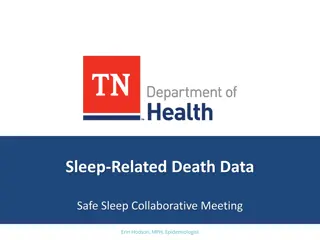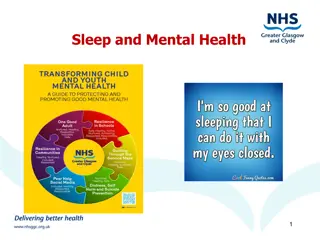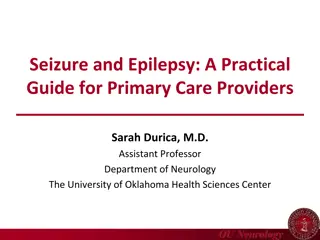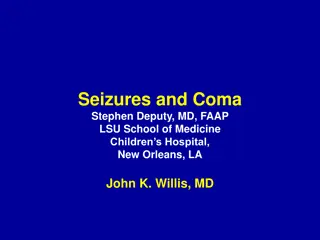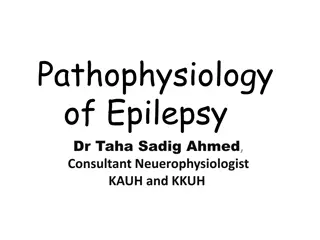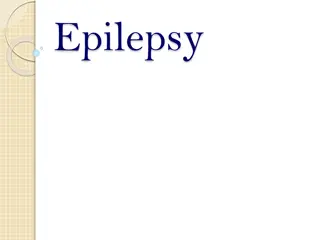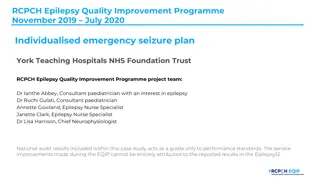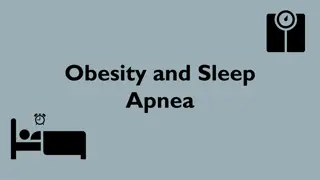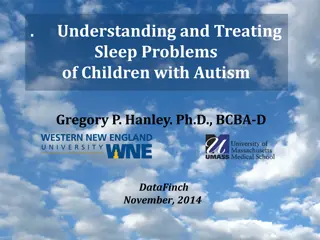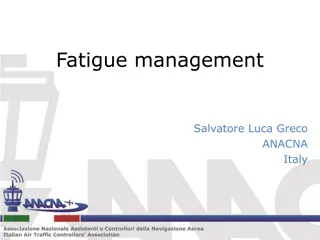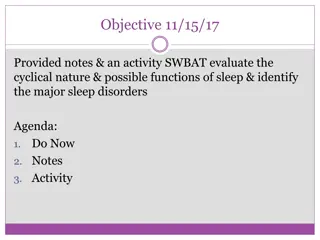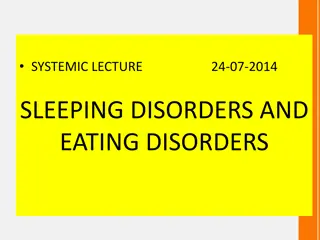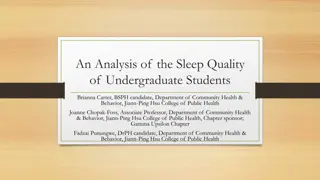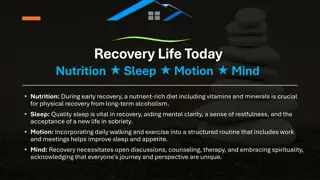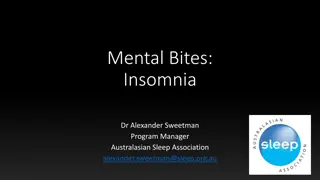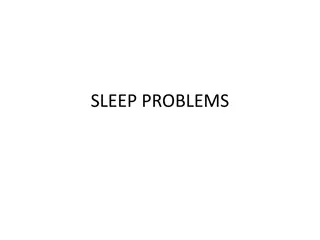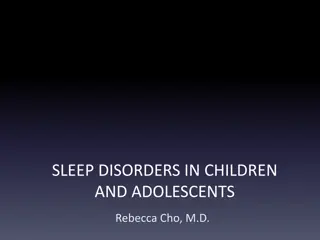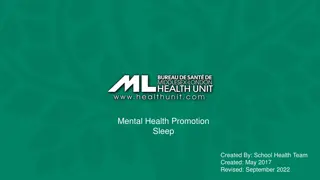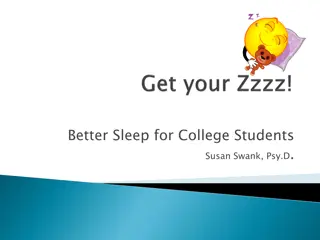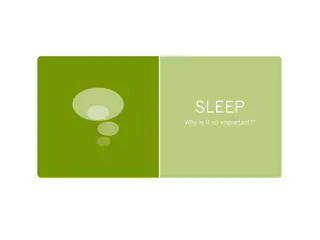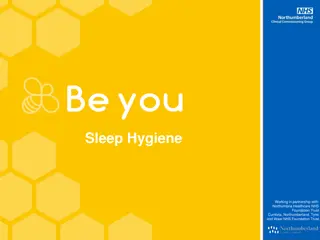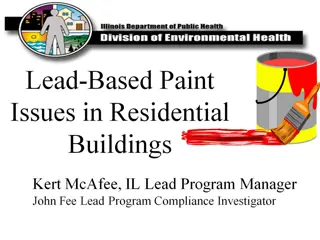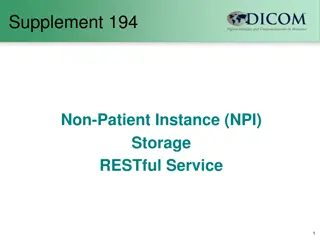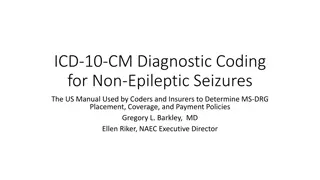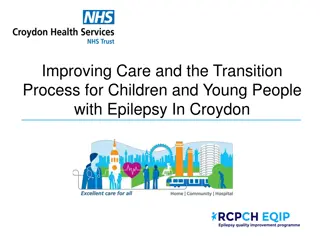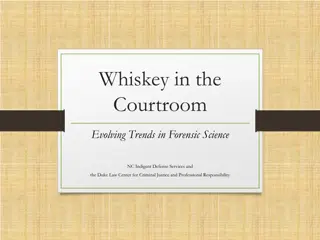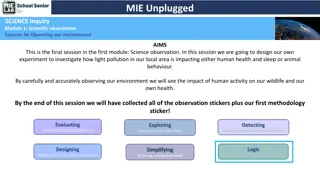Understanding Sleep and Epilepsy: Tips for a Restful Night
Delve into the intricate relationship between epilepsy and sleep, exploring the functions of sleep, optimal sleep durations, common sleep disorders, and best practices for quality sleep. Uncover valuable insights such as why we sleep, sleep requirements for adults, epidemiological data on sleep insufficiency, basics of sleep regulation, and the stages of nighttime sleep cycles. Gain knowledge on how to promote better sleep hygiene and enhance overall well-being while managing epilepsy.
Download Presentation

Please find below an Image/Link to download the presentation.
The content on the website is provided AS IS for your information and personal use only. It may not be sold, licensed, or shared on other websites without obtaining consent from the author. Download presentation by click this link. If you encounter any issues during the download, it is possible that the publisher has removed the file from their server.
E N D
Presentation Transcript
Getting a Good Nights Sleep with Epilepsy Eilis Boudreau M.D., Ph.D. Portland VA Medical Center Epilepsy Center of Excellence & Sleep Medicine Program
Outline What is the function of sleep? How much sleep do we need? Sleep Basics Common sleep disorders Best Sleep Practices
Sleep Requirements Average adult: 7.5-8 hours Epidemiology: sleep>9 hours or <4 hours have higher chance of death secondary to CAD, stroke and cancer vs 7-8 hour/night sleepers During pre-light bulb Victorian era, average sleep times closer to 10 hrs/day
Epidemiology: 2006 CDC Report 35.0% 32.6% 29.6% 30.0% 0 Days 25.0% 1-6 Days 20.0% 7-13 Days 12.9% 12.2% 15.0% 14-20 Days 10.1% 21-29 Days 10.0% 2.6% 30 Days 5.0% 0.0% # Days of insufficient sleep http://www.cdc.gov/mmwr/preview/mmwrhtml/mm5708a2.htm
Sleep Basics Drive to sleep driven by: Internal body clock (circadian) How much sleep debt we ve built up
Regulation of Sleep From Update on the Science, Diagnosis and Management of Insomnia , ed Gary Richardson, 2006, pg. 13.
Nighttime Sleep Cycles Each cycle last approximately 90-110 minutes 4-6 cycles per night During first cycles Rapid Eye Movement (REM) component only a few minutes First 2 cycles have significant slow wave sleep Later cycles dominated by REM
Most Common Sleep Disorders Restless Leg Syndrome Sleep-disordered breathing Insomnia
Restless Leg Syndrome Clinical diagnosis - Urge to move legs - Begins or worsens during rest - Relieved with movement - Worst or only occurs at night
RLS: Epidemiology Two peaks of incidence - 2nd decade - 4th and 5th decades
RLS Treatment Dopamine agonists (ex. ropinirole) Other treatments include gabapentin, clonazepam, narcotic meds for very resistant cases Non-pharmacological: decrease caffeine, nicotine, alcohol; massage legs; warm baths before bedtime
Sleep Disordered Breathing Episodes of difficulty breathing or cessation of breathing for at least 10 seconds
Sleep Disordered Breathing Snoring (but many people snore and DON T have apnea) Witnessed apneas Excessive daytime sleepiness AM headaches Dry mouth
Factors that Increase Risk for Sleep- Disordered Breathing? Being overweight Larger neck circumference Being a male Increased age Post-menopausal
Obstructive Sleep Apnea: Epidemiology 5% - 20% adults Males > Females
Why treat Sleep-Disordered Breathing? Short-term: patients feel better and function better Long-term: prevent long-term complications of apnea
Sleep Apnea and Epilepsy Treatment of sleep apnea may improve seizure control
Diagnosis and Treatment of Sleep Apnea Diagnosis: Overnight sleep study in the sleep laboratory Treatment: CPAP
Insomnia Multiple causes. Is a symptom, many times of multiple issues. Need to evaluate underlying problems to get at root cause.
Insomnia and Epilepsy Increased awakenings in patients with epilepsy ?seizures ?medication side-effects (lamotrigene, felbamate, levetiracetam)
Best Sleep Practices Set-up bedroom only for sleep. Have a regular sleep routine. Keep a regular bedtime and wake time. Protect your sleep time from other activities. Avoid alcohol before bedtime. Limit caffeinated beverages.
Sleep in Epilepsy Seizures at night common with some types of epilepsy. Seizures can disrupt normal sleep. Sleep-deprivation may trigger seizures. Depression and anxiety more common in epilepsy and also disrupt sleep.
Sleep, Epilepsy, and Alcohol Alcohol may increase chance of seizure (especially binge drinking) Alcohol significantly disrupts sleep Significant alcohol intake not good for seizure control or sleep
Summary of What We Know About Sleep and Epilepsy Poorer sleep quality Apnea may be more common and treatment may improve seizure control Antiepileptic medications may worsen sleep (fragment sleep, increase insomnia)
Best Sleep Practices Set-up bedroom only for sleep. Have a regular sleep routine. Keep a regular bedtime and wake time. Protect your sleep time from other activities. Avoid alcohol before bedtime. Limit caffeinated beverages.
Improving Sleep in Epilepsy Optimize epilepsy treatment Discuss any medication side-effects with care provider Practice good sleep hygiene Identify and treat sleep disorders such as apnea Tell you care provider if you develop sleep problems
